Micro-Numismatic Quiz #7 ANSWERED
 Insider2
Posts: 14,452 ✭✭✭✭✭
Insider2
Posts: 14,452 ✭✭✭✭✭
Sorry, no prizes ![]()
I am going to be posting micrographs of anything that can be found on coins. Some will be easy and some will not. The correct answer is whatever I say it is ![]() but feel free to disagree (giving your reason) so all of us can discuss it. Images will be posted in this thread at my discretion - several each week. I will usually post the answers late the next day after the quiz was posted.
but feel free to disagree (giving your reason) so all of us can discuss it. Images will be posted in this thread at my discretion - several each week. I will usually post the answers late the next day after the quiz was posted.
In order to make this FUN for beginners. I'll ask the "experts" to PLEASE not guess what any of the images are until the next day. Otherwise, folks like (fill in the blank) will get all of them immediately - That's NO FUN. If no correct answer is given by the next day, the "experts" should PLEASE respond. The answer for each image will usually be posted in the afternoon when I add another image.
The Rules:
1.Anyone can guess. That's because even an incorrect guess can open further discussion as to why it is incorrect.
2.The BEST guess is in two parts:
A. What characteristic the image shows.
B. What did you see in the image that lead to your guess.
The Question: What is the round lump on the coin's surface. Is this smooth, round, bubble-like lump evidence of a cast?
The Image:
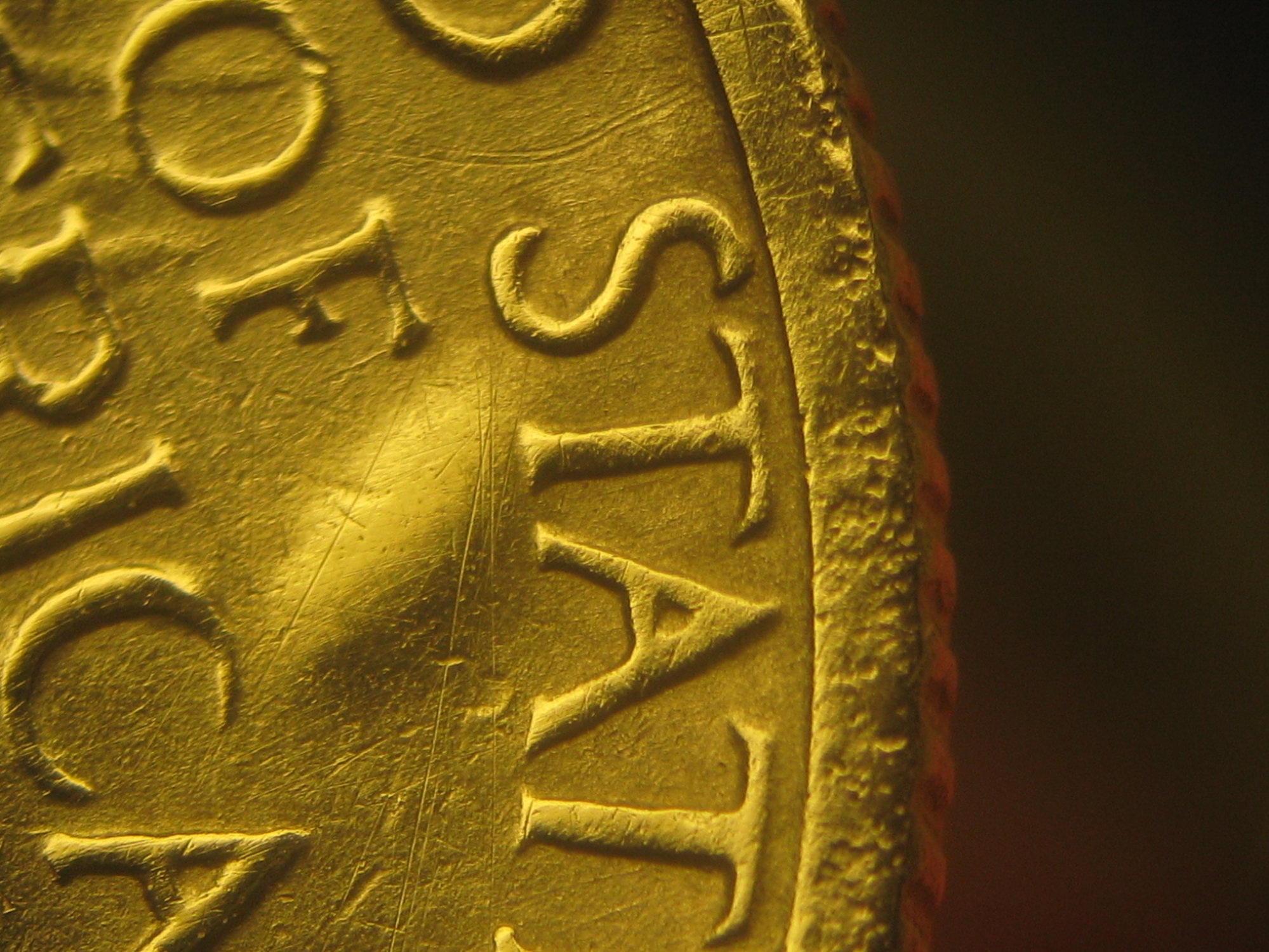
Comments
Just a guess---damage to the die that a mint employee tried to polish out to salvage the die.
Another guess---after extended use, the surface of the die has collapsed into the surface of the die.
Worry is the interest you pay on a debt you may not owe.
"Paper money eventually returns to its intrinsic value---zero."----Voltaire
"Everything you say should be true, but not everything true should be said."----Voltaire
What would damage to a die look like? What would a coin struck with a damaged die look like? Now, when the engraving dept. tried to polish out the damage, what would that look like?
My guess is that something harder than the die was struck through in previous strikes, leaving the impression on the die. Mint employees then tried to salvage the die by polishing the damaged section...
Successful BST transactions with: SilverEagles92; Ahrensdad; Smitty; GregHansen; Lablade; Mercury10c; copperflopper; whatsup; KISHU1; scrapman1077, crispy, canadanz, smallchange, robkool, Mission16, ranshdow, ibzman350, Fallguy, Collectorcoins, SurfinxHI, jwitten, Walkerguy21D, dsessom.
I say it's a fake.....looking below the OF as well.
Or, somebody tried to salvage an unsalvageable die.
bob
Both posters are saying that when a die is damaged it leaves a depression in the die with the shape determined by what did the damage. A depression in the die would be filled by planchet metal when the coin is Struck. A depression in the die leaves a raised mark on a coin. That's what we see in the image - a raised mark on the coin. So...
Please, no "expert's" answer until tomorrow.
Looks like a die failure after a clash episode.
Please, no "expert's" answer until tomorrow. YEA PERRY! & Mr. I have 20,000 posts. No experts allowed today, hello.
YEA PERRY! & Mr. I have 20,000 posts. No experts allowed today, hello.  LOL
LOL
My guess, there is a chunk of metal on the other side, otherwise I like the pros answers.
Gas bubble under coin surface or die repairs. It is difficult to assess without seeing the entire coin to compare device or letter elevations.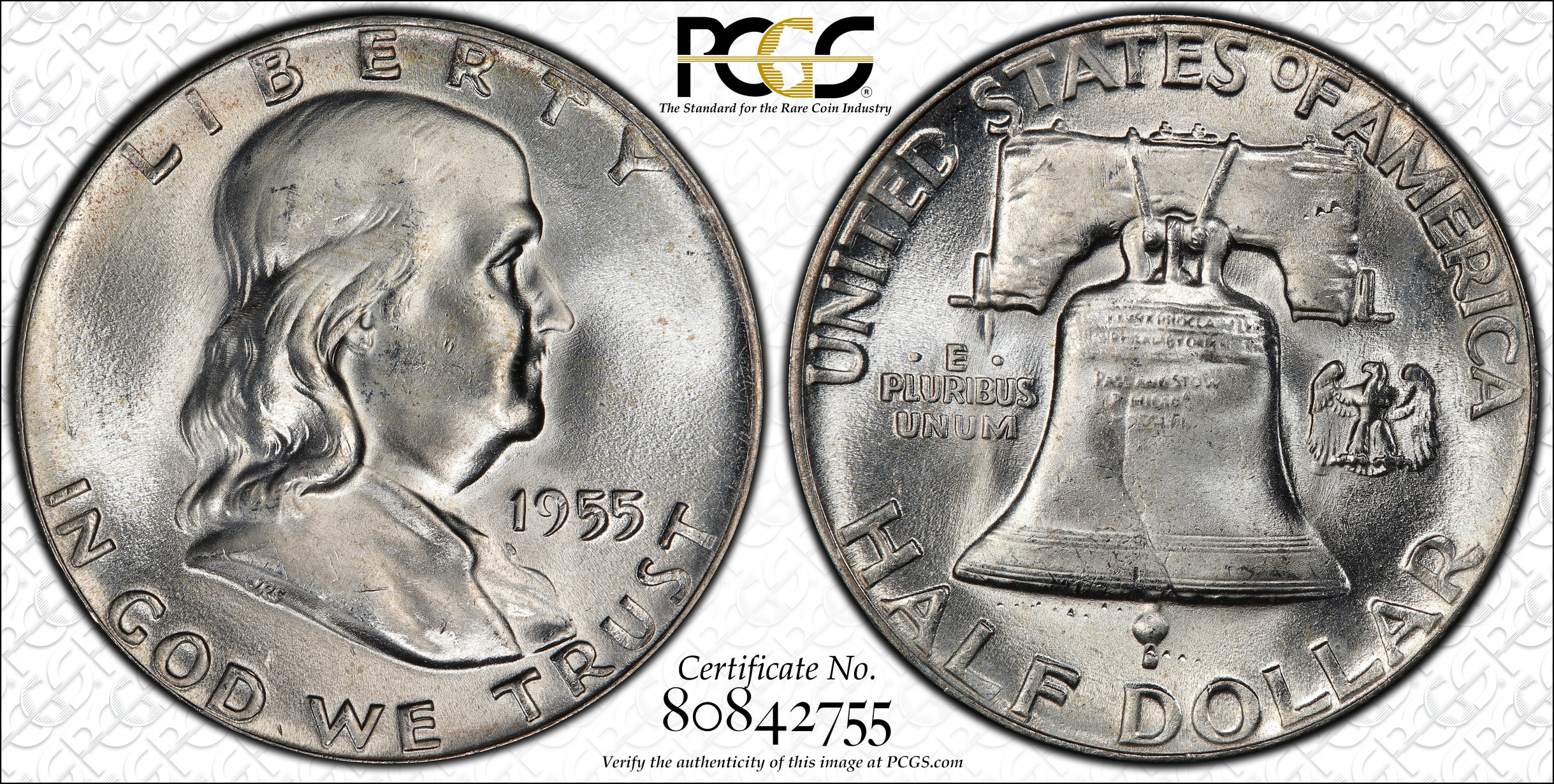
I lean towards a clash explanation. Especially with the shallow looking letters. Compare the raised area under the viewers left bell hanger above E Pluribus Unum on this 1955 Bugs bunny die clash as though a spear head points towards the B in Pluribus
https://www.autismforums.com/media/albums/acrylic-colors-by-rocco.291/
I'm imagining a collapsed void a bit under the surface of the die metal. The borders of the raised area are very smooth with a gradual transition. They don't look like they've been machined or tooled. Not that it matters, but is this a gold coin or is it another silver coin with a goofy white-balance? The appearance of the hits and scratches seems most consistent with a soft gold surface to me, but could also be seen in other metal.
To answer the question. Yes, it is a cast.
Reasoning:
The rim has porous spots.
The “bubble” is caused by an indentation in the mold.
The indentation was caused by the smelter not fully packing the mold prior to the pour and/or an air pocket formed during the pour.
GREAT ANSWERS but please don't get mad at me. This not an I'm smarter than you thing - OK? Tomorrow the "expert's " can chime in as they now the answer.
I hope they don't post this time as I'll walk all of us through the solutions. In fact, I'm going to do it now.
You can either post your response here or keep it to yourself. What we know: "its a smooth, oval, bubble-like lump. To make a raised mark on a coin usually we need to have a smooth, oval, mark INTO a die. If an attempt to polish out the mark was made, what would the evidence look like? What does die polish look like?
I do not see heavy polish lines on your example coin
Die polish has the appearance of wood grain or parallel textures. Another 1955 example showing heavy polish lines around hair, Eagle, Bell, and some fields
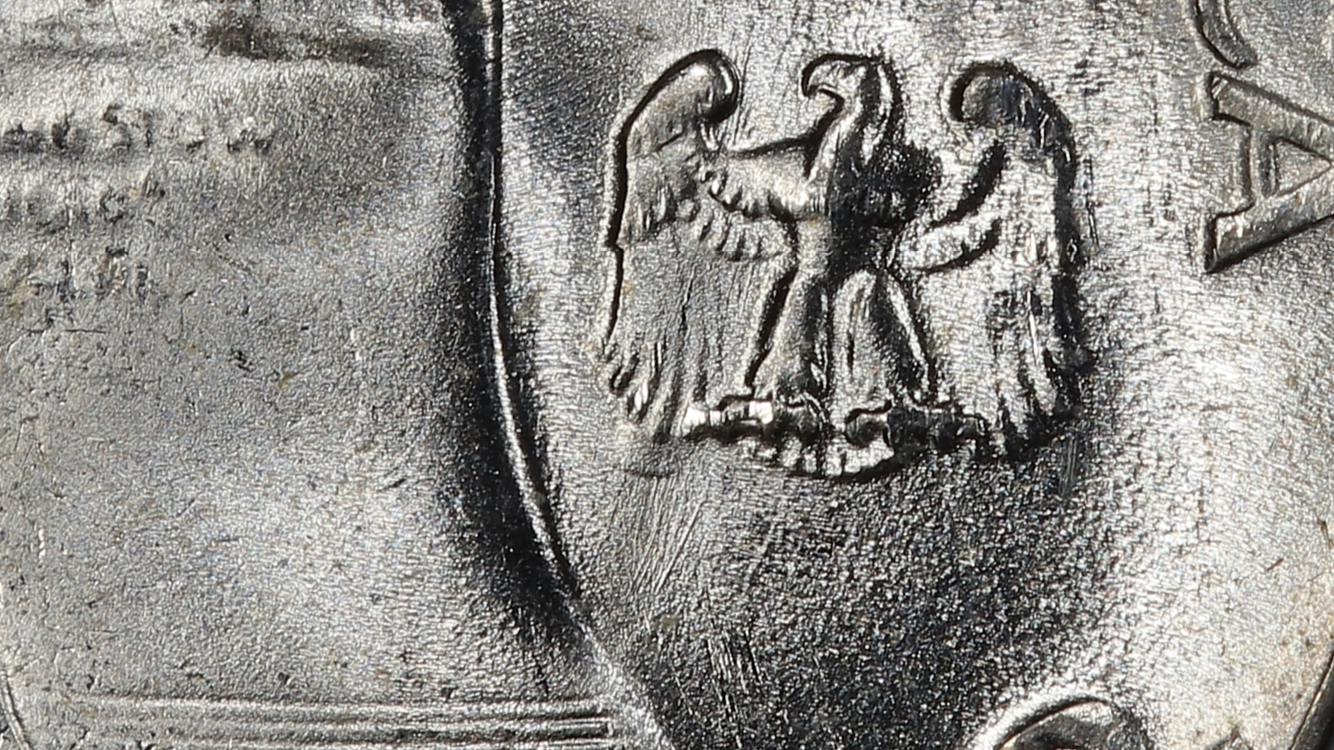
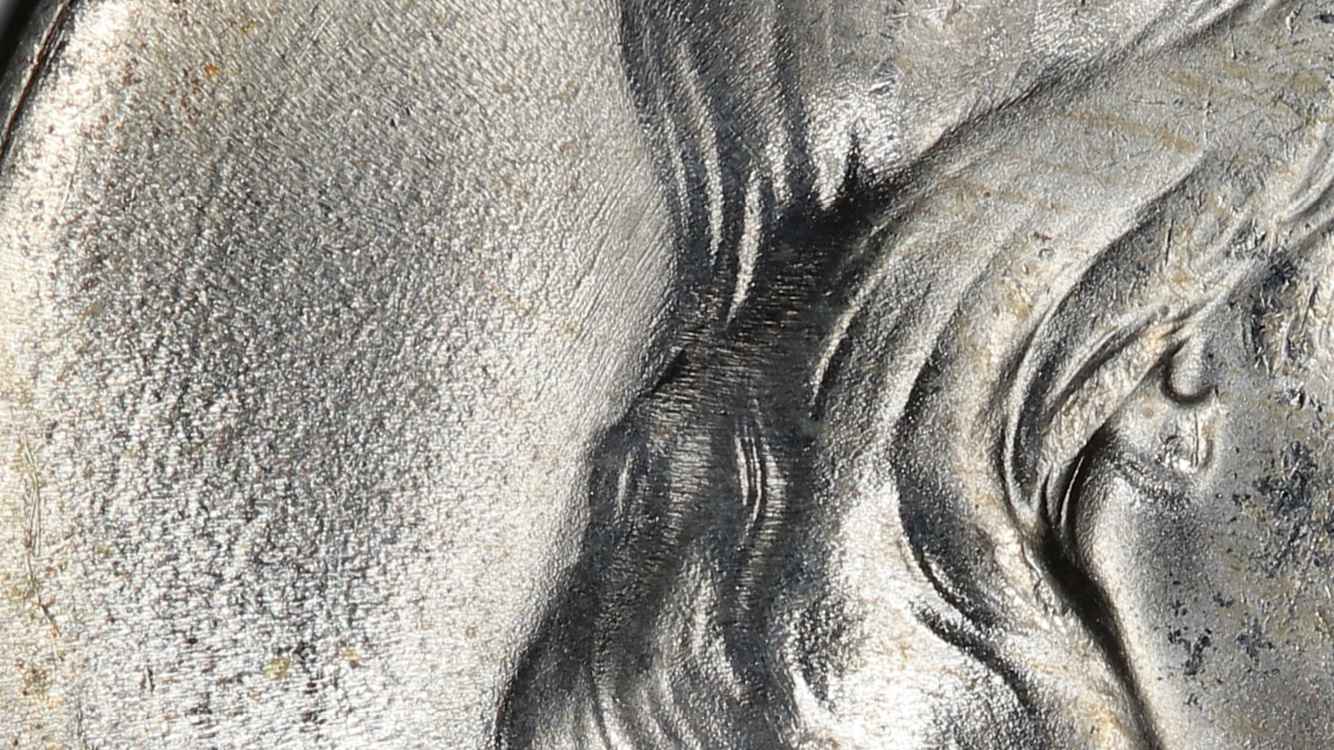
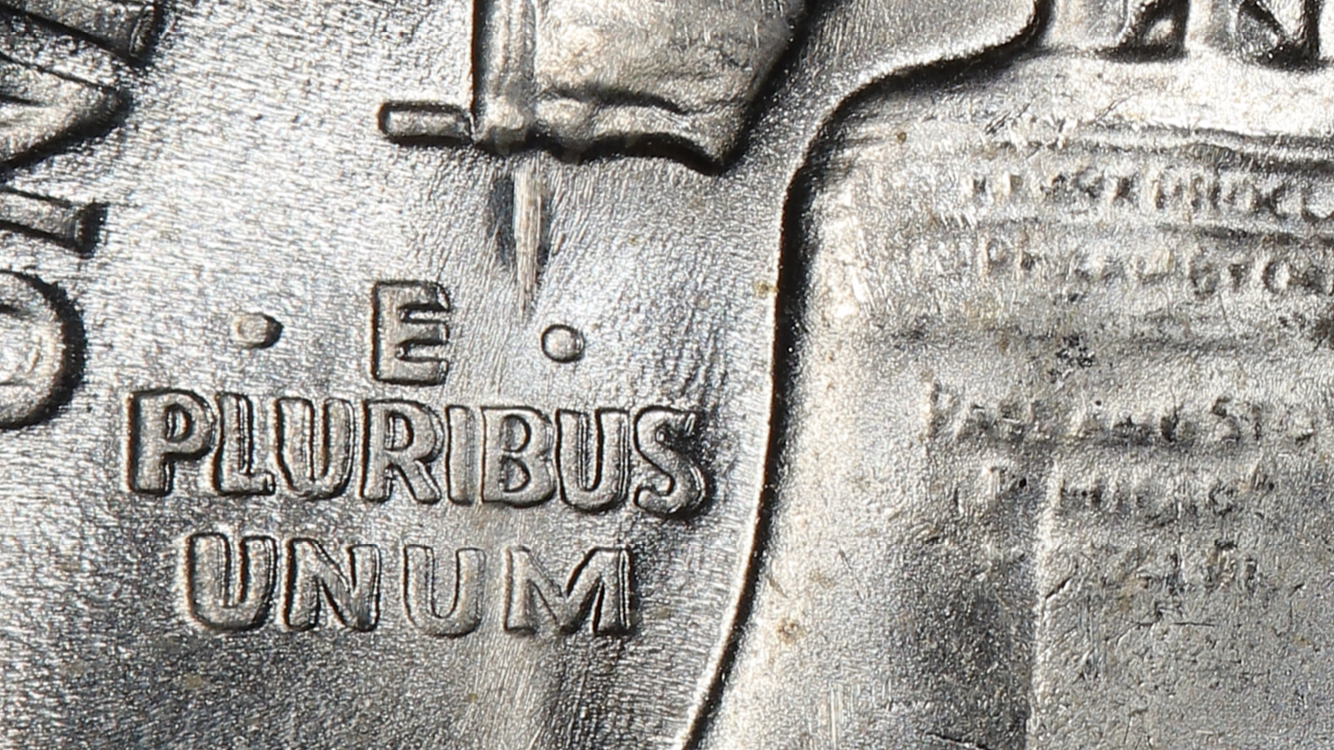
https://www.autismforums.com/media/albums/acrylic-colors-by-rocco.291/
Based on that picture, I see a raised lump that needs more inspection. I see other lines raised to the left so I would check the metal to see if it is real.
Best place to buy !
Bronze Associate member
What are the lines going across the lump? are they raised or into the coin? Now what Die polish looks like on the Franklin in the post above.
The more I look at that picture the more it looks counterfeit.
Worry is the interest you pay on a debt you may not owe.
"Paper money eventually returns to its intrinsic value---zero."----Voltaire
"Everything you say should be true, but not everything true should be said."----Voltaire
Another WAG.
Die subsidence. “Soft” spot in the die caused the raised bubble on the coin.
Polish lines on the die would show up as raised lines on coin. I do not see any way to polish out die subsidence; would take polishing all the fields to the depth of the subsidence.
Edit to copy the pic lower down into the thread.
The lines across the lump are "into" the coin! Therefore they are scratches. If you look closely at the side of the "T" at the bottom of the image you will see two short, raised, parallel lines that ARE die polish.
The coin is not a counterfeit. Its rim is very beat up. There are several clues on the coin. Is the surface original with the lump and scratches? If the scratches are across a raised lump, they could not have been made to the die as they are not raised.
This is a tough quiz. Once you learn what caused the lump, you'll remember it. I know there are plenty of members who wish to reply because they know what it is. One member has answered correctly.
Was the coin heated resulting in this raised bulge?
Worry is the interest you pay on a debt you may not owe.
"Paper money eventually returns to its intrinsic value---zero."----Voltaire
"Everything you say should be true, but not everything true should be said."----Voltaire
BINGO!
This coin was heated causing trapped gas inside it to migrate to the surface. This can occur when a coin is buffed as is probably the case here. Note how the letters are smooth, rounded and in low relief due to the buffing. A bubble in a mold used to make a cast copy will also result in a raised, round, smooth defect - just not this big.
I've seen this type of bulge on coins that have been in a fire.
Worry is the interest you pay on a debt you may not owe.
"Paper money eventually returns to its intrinsic value---zero."----Voltaire
"Everything you say should be true, but not everything true should be said."----Voltaire
I've made them for my teaching set using a propane torch!
Excellent explanation! I though gas bubble initially but had no idea how it could form without breaking.
Heat! Thanks for doing these quizzes, very enlightening
https://www.autismforums.com/media/albums/acrylic-colors-by-rocco.291/
Interesting. I was always under the impression (sorry for the inadvertent pun) that the pressure involved in striking a coin would release any trapped gas in the planchet.
Successful BST transactions with: SilverEagles92; Ahrensdad; Smitty; GregHansen; Lablade; Mercury10c; copperflopper; whatsup; KISHU1; scrapman1077, crispy, canadanz, smallchange, robkool, Mission16, ranshdow, ibzman350, Fallguy, Collectorcoins, SurfinxHI, jwitten, Walkerguy21D, dsessom.
From what I've seen this phenomena is more prevalent with clad coins since there is a greater likelihood of trapped air or gas between the clad layers.
Worry is the interest you pay on a debt you may not owe.
"Paper money eventually returns to its intrinsic value---zero."----Voltaire
"Everything you say should be true, but not everything true should be said."----Voltaire